Hi,
Over the long weekend, the family and I managed a road trip up to Cape Breton, and I had the chance to check something off my bucket list; I finally got to see the partially restored Fortress Louisbourg. While active Louisbourg was the largest fortification in North America, one of the strongest manifestations of French power on the continent, and the continental base for the French fleet after the end of the War of the Spanish Succession. It controlled access to the mouth of the St. Lawrence, securing the northern flank of French territory, and secured French access to the Grand Banks fishery.
It was taken twice, both times due to the failure of a relief force to arrive after a multi-week siege, once by New England provincial troops supported by the British Navy (in 1745), and the second time by British Royal forces in 1758. The latter was the first step in the conquest of New France culminating in 1759. Louisbourg is a critical element of the birth of the modern world; the trading of the Fortress back after '45 was a key step in the formation of a separate political identity in the British colonies, and it's fall in '58 secured the British path to domination of the continent, the consequent growing tension between Britain and it's American colonies, the creation of both the United States and Canada, and everything else that flows from it. Much of the world we know begins there.
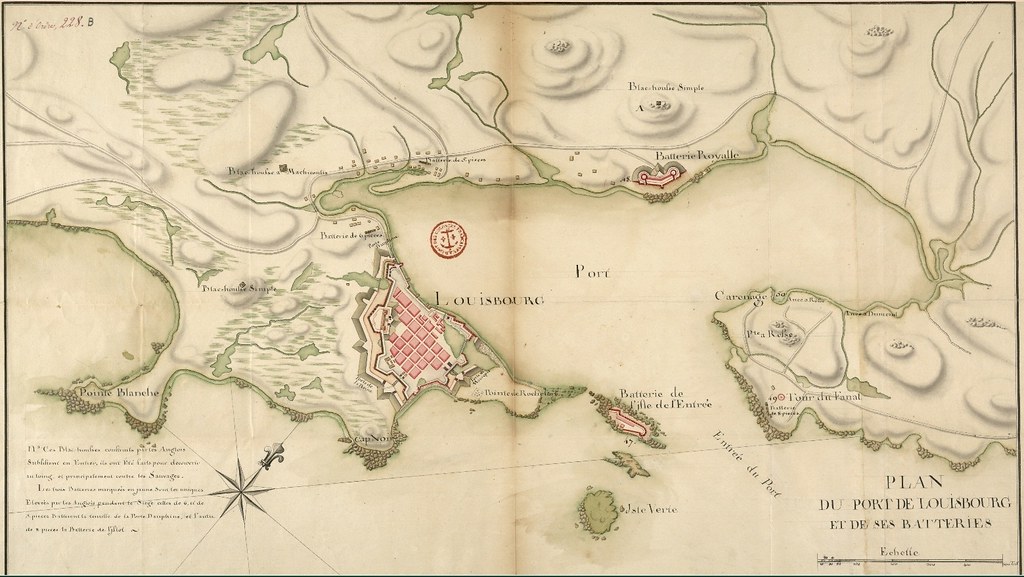 |
| 1751 Map. Restored portion is the NW corner. |
With the kids, the trip up is about six hours, so we stayed a couple nights, and spent all of Sunday at the Fortress. The restored site is several kilometers from where you park, so they run a shuttle bus; we were on the first bus in, and the last out ;)
 |
| Parking lot is a short bus ride away. This is the view on the approach. |
About a quarter of the Fortress has been restored so far, but that includes some small outlying settlements, including a collection of fishermen's huts, boats, and supplies.
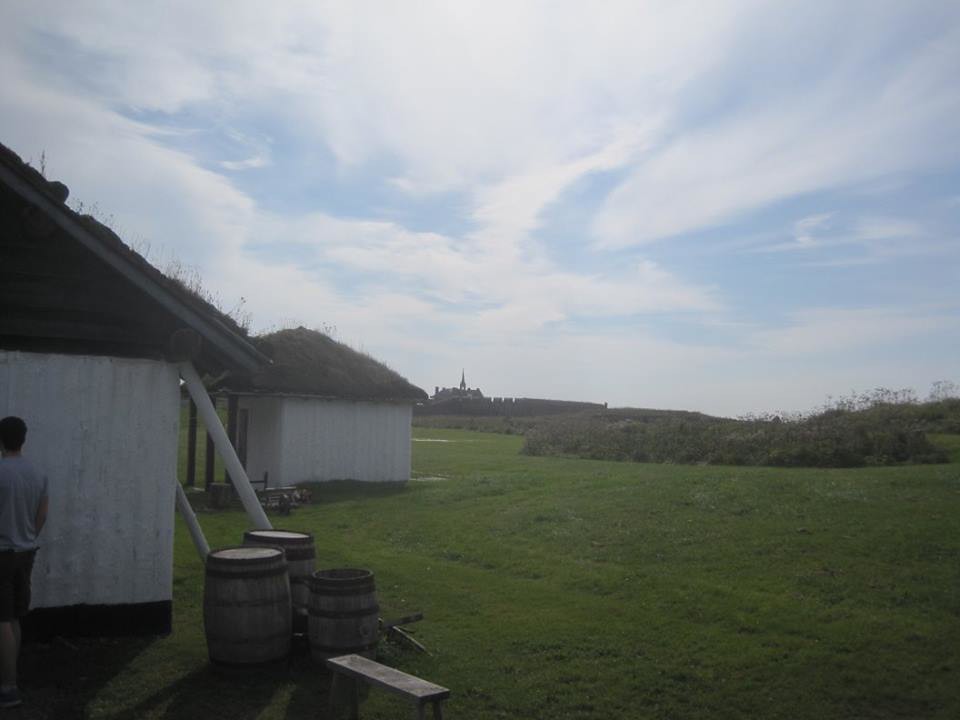 |
| Fishing village on the outskirts. |
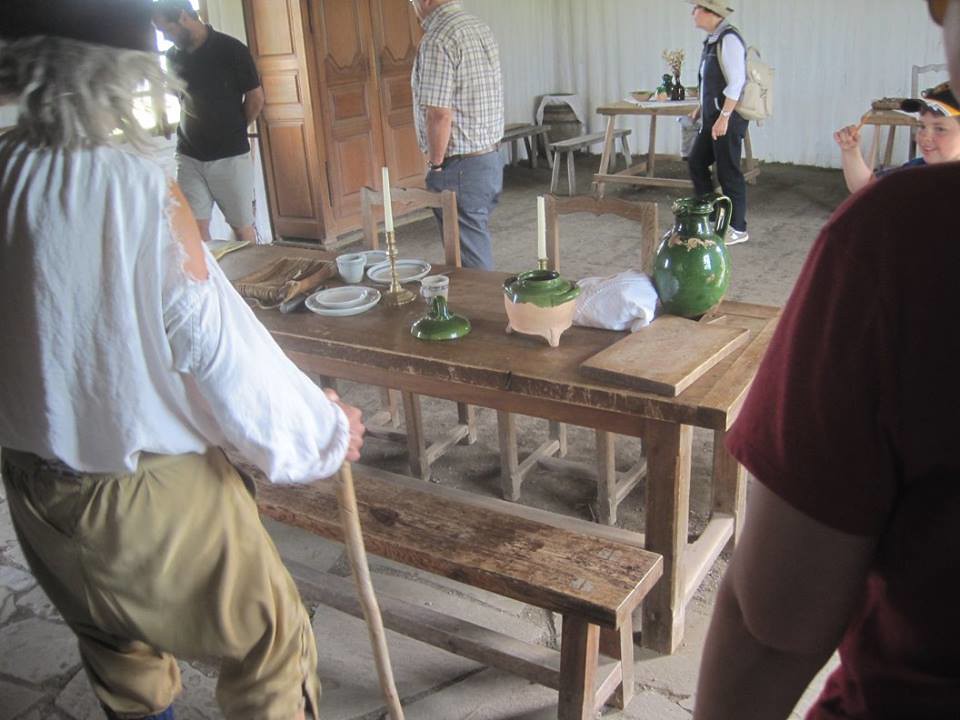 |
| Interior, Fisherman on left. Asked if Puddin' could fix his shirt. |
Main access to the Fortress is via the Dauphin gate, and the view as you walk in is spectacular.
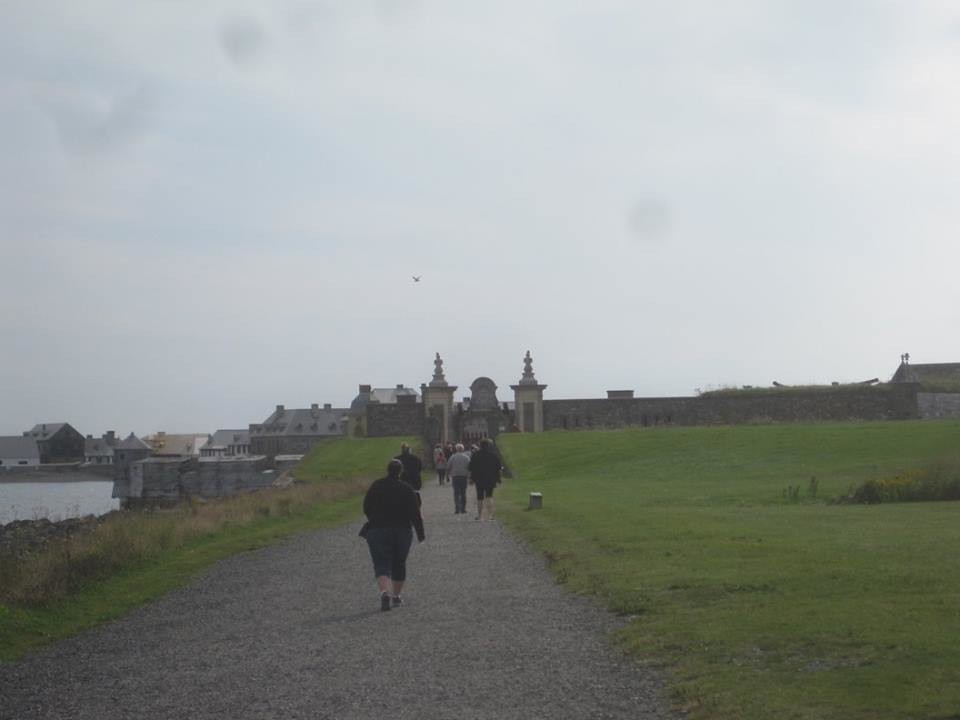 |
| Approaching the Dauphin gate. |
I got a picture of the guard post, but at this point was grinning so hugely my head was about to fall off, and forgot to take some of the interior. Behind the small gate is a drawbridge, and then the main gate, which is overlooked by the Dauphin Bastion.
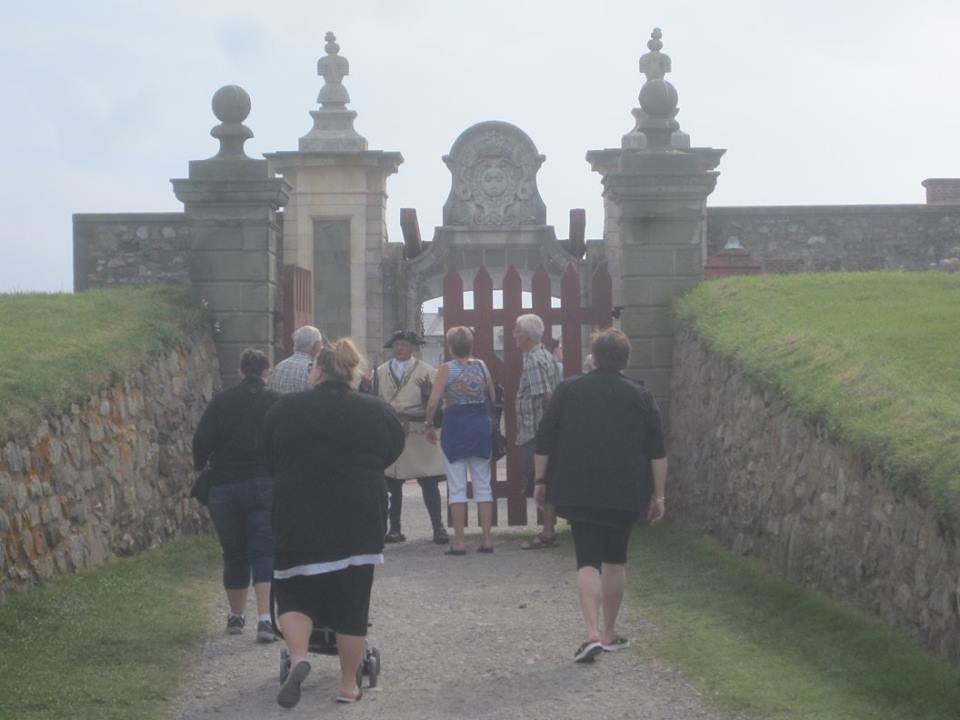 |
| Exterior guard post, Dauphin gate. Companie Franche de la Marine guard. Cub recognized him as one of the guys I've painted. |
Two of the original Bastions have been restored, the Dauphin, and the King's.
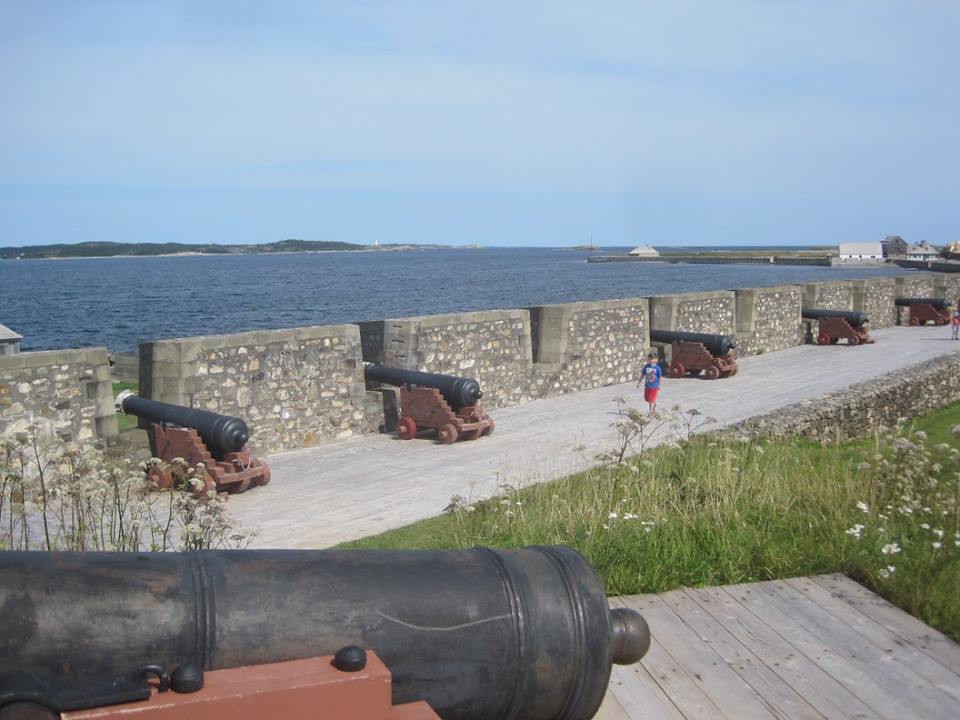 |
| Top of Dauphin Bastion, bay side. |
 |
| Firing a gun at the Dauphin Bastion. |
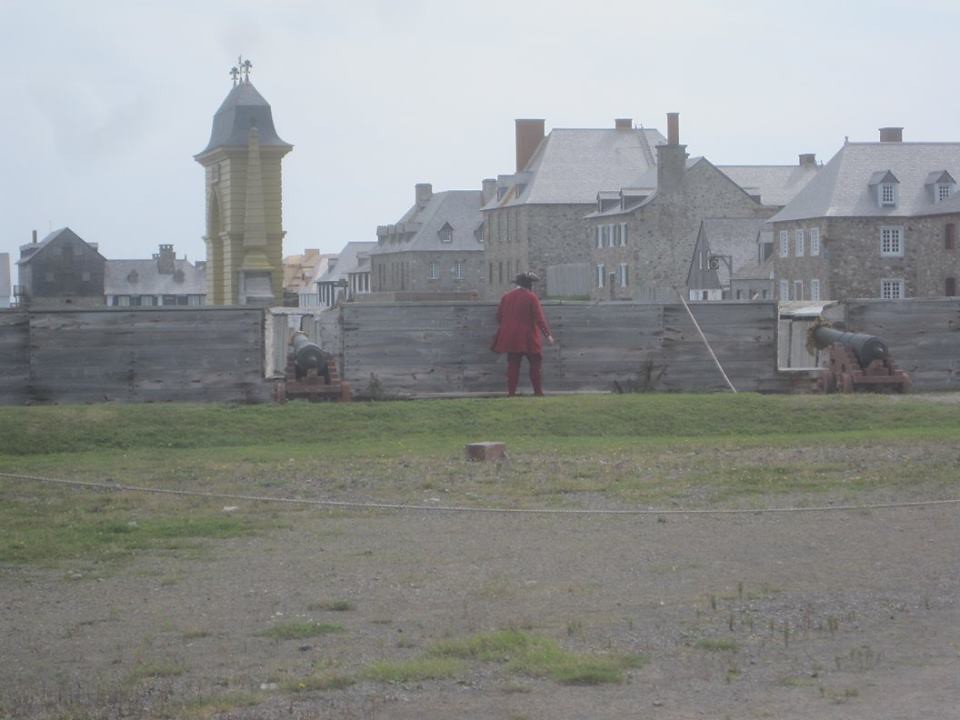 |
| Dauphin Bastion, harbour side. |
Just inside the Dauphin Bastion, there's a sally port tucked away - I think most of the crowd missed it.
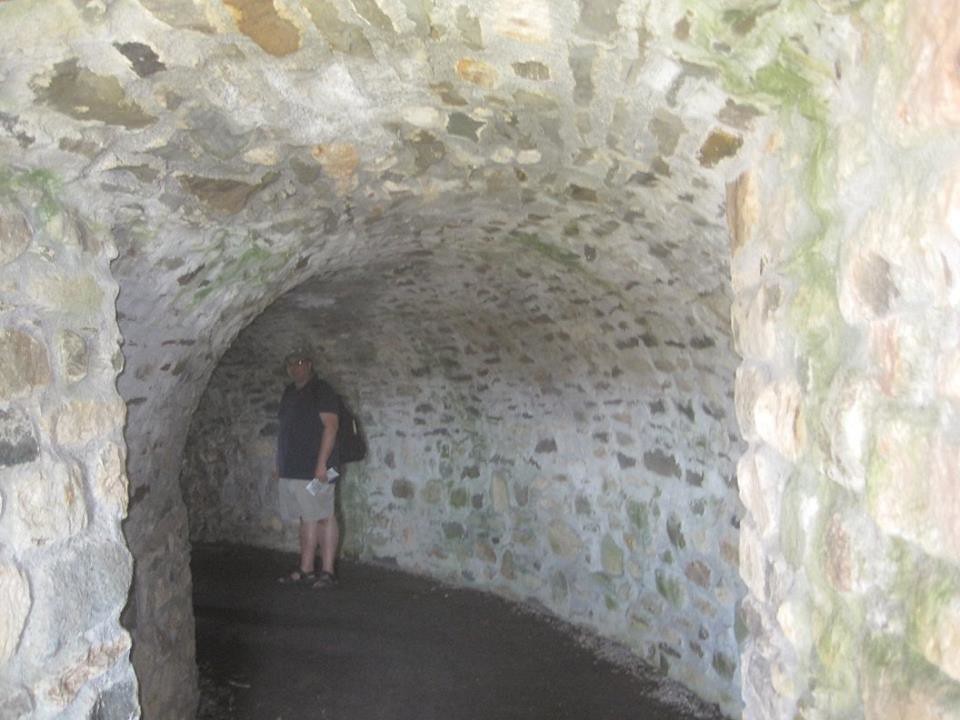 |
| Sally port tunnel, just inside the Dauphin Bastion. |
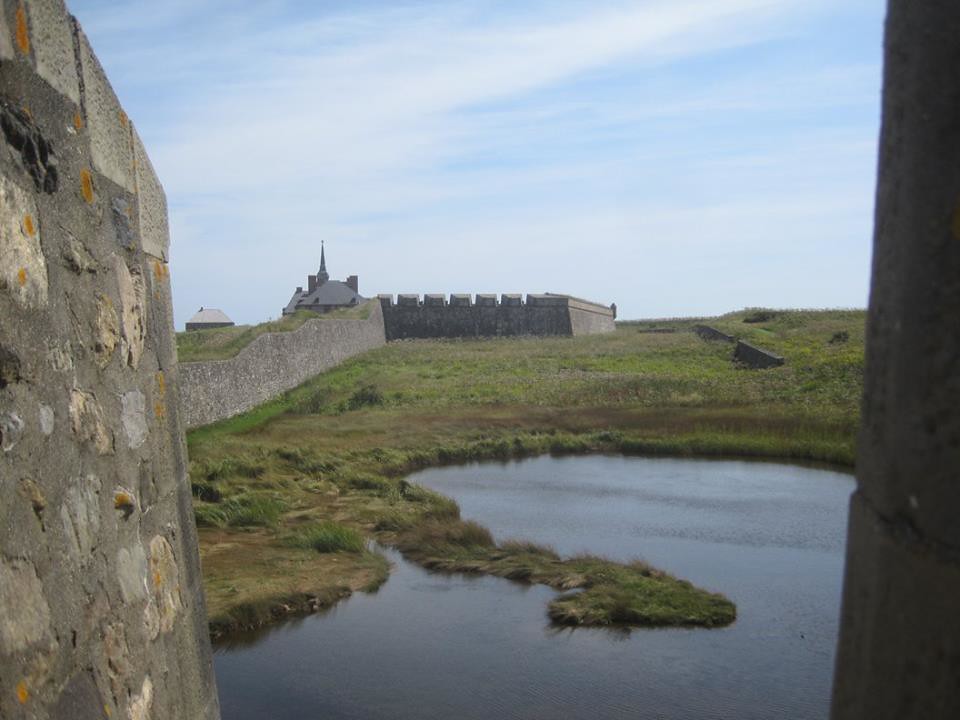 |
| View of the King's Bastion from the sally port. |
Once inside the walls, you start to get a feel for the scope of the place.
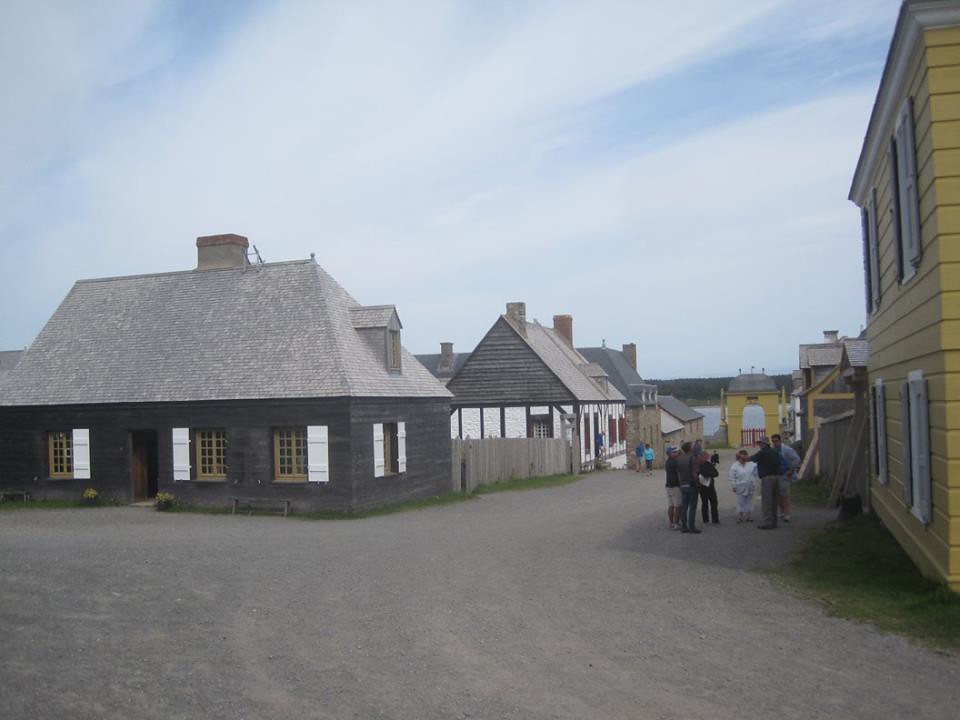 |
| Part of the restored town, View from one of the crossroads down to the Frederick gate (i.e., the main quay). |
Louisbourg was a fairly significant settlement, as well as a fortification, and building interiors have also been restored. They've done a fantastic job with this, showing not only residences, but manfacturing / storage / mercantile buildings as well. Period trades and crafts are actively pursued on site - we had an interesting conversation with both the boat builders and a woman making lace.
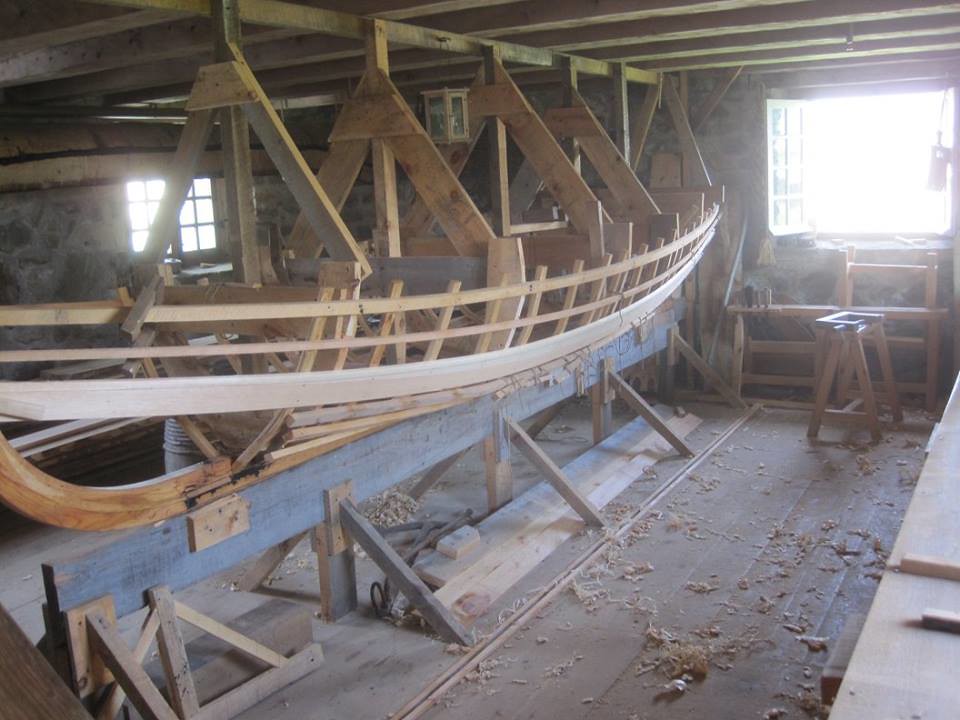 |
| Boatbuilders' workshop. This is an active project; we were talking with the builders. |
 |
| Lace making; as with the boat, period crafts / trades are actively pursued. |
They've also made a real effort to engage the Mi'kmaq tradition, albeit primarily back at the Visitors' Centre. The alliance with the Mi'kmaq was key to French control of the region.
 |
| Gorgeous bead-work. |
While there's nothing on the scale of farming, most of the residences have mixed gardens out back, and there's smaller livestock all over the place. Puddin' was much taken with the geese, and vice versa.
 |
| One of the house gardens. |
 |
| "Fancy" kitchen, the royal engineer's house. The Friar serving as cook was an interesting guy. |
There's also a few places where they've set up displays of household goods, reconstructed from wills and other descriptions of estate.
 |
| Series of household good displays. |
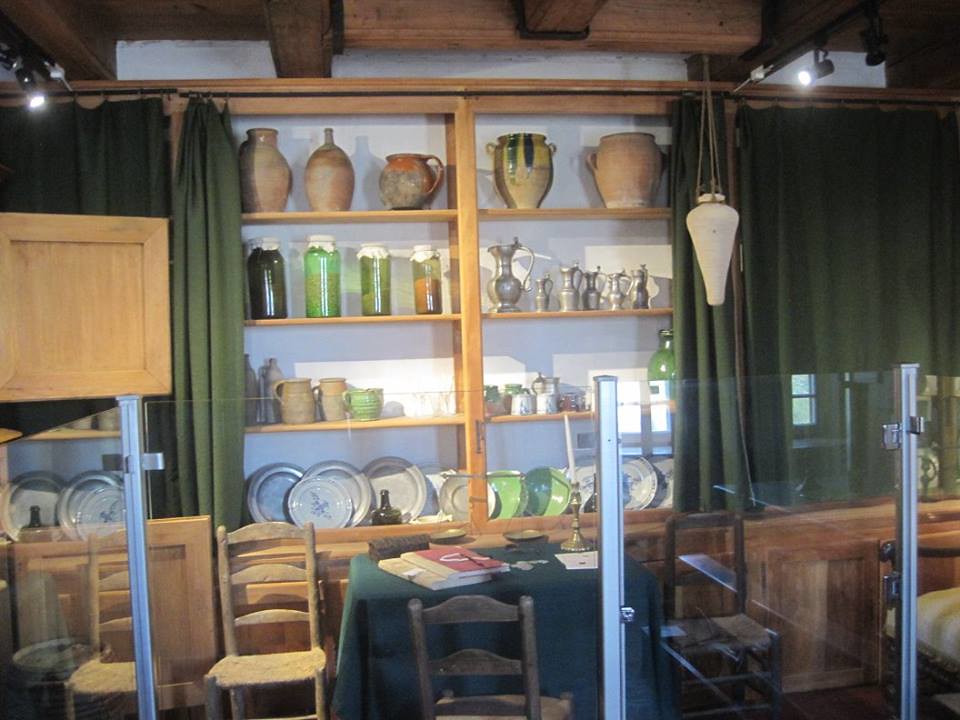 |
| Marie Rose's goods. |
If you go in the peak season, there's a fairly extensive staff in period dress, who both wander about as mobile "historical interpreters", and who do scheduled events throughout the day. One of the latter was a military demo, with a fife and drum performance, musket drill, and a cannon firing.
 |
| Cannon ceremony, King's Bastion. |
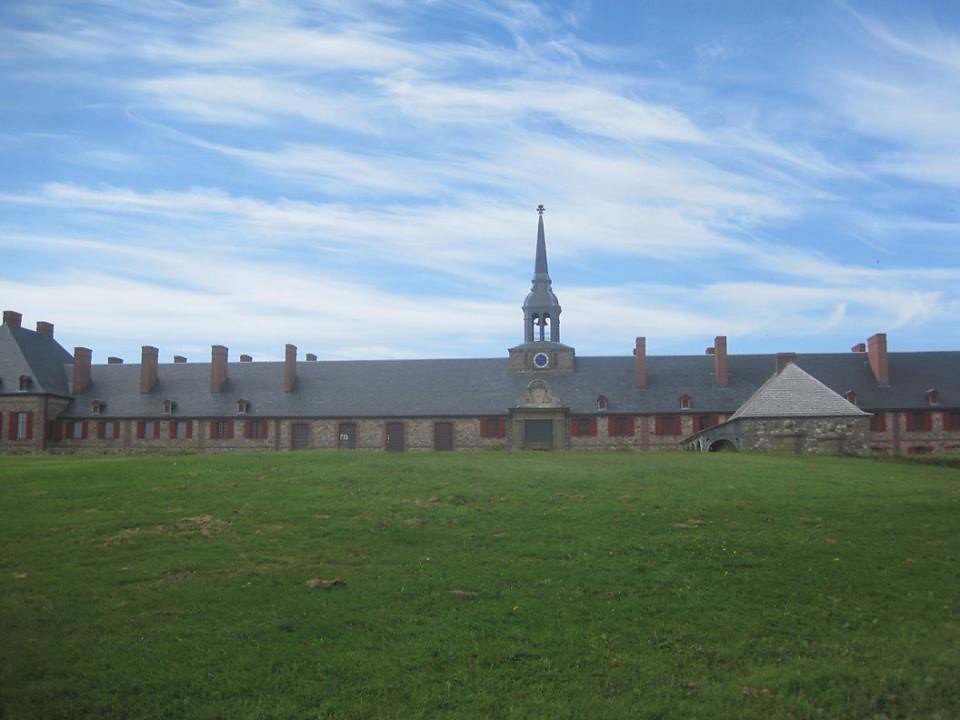 |
| Administrative building for the Fortress, King's Bastion. |
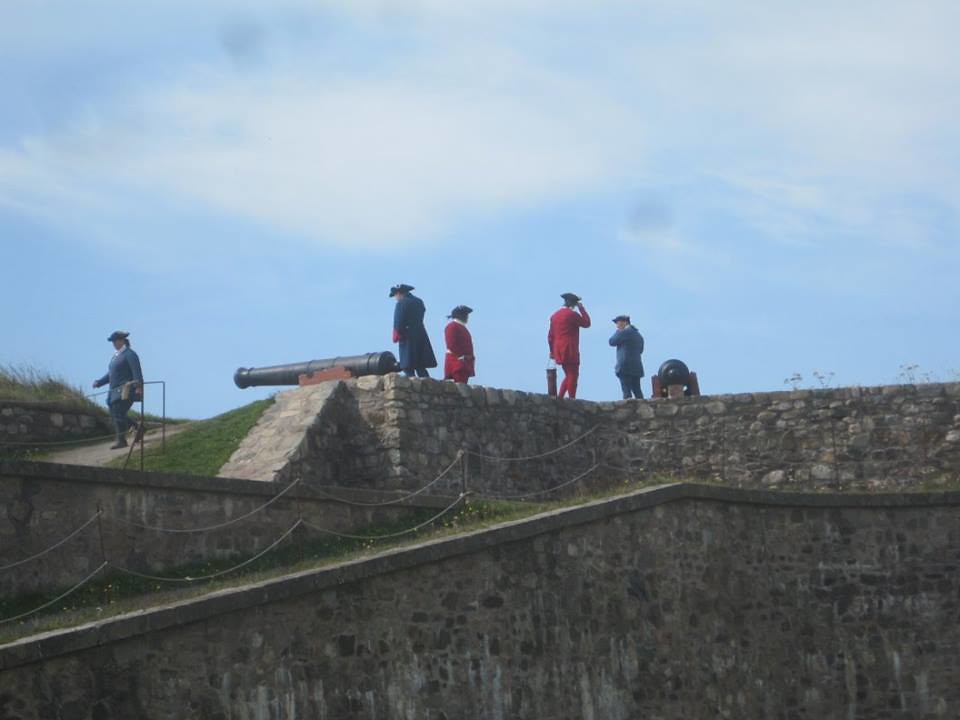 |
| Readying the cannon. |
I had some interesting conversations with the interpreters, including one dressed as Captain Vauquelin, who ran the British blockade to get news to France of the Fortresses imminent fate. He gave me a couple of readings tips that are panning out well ;)
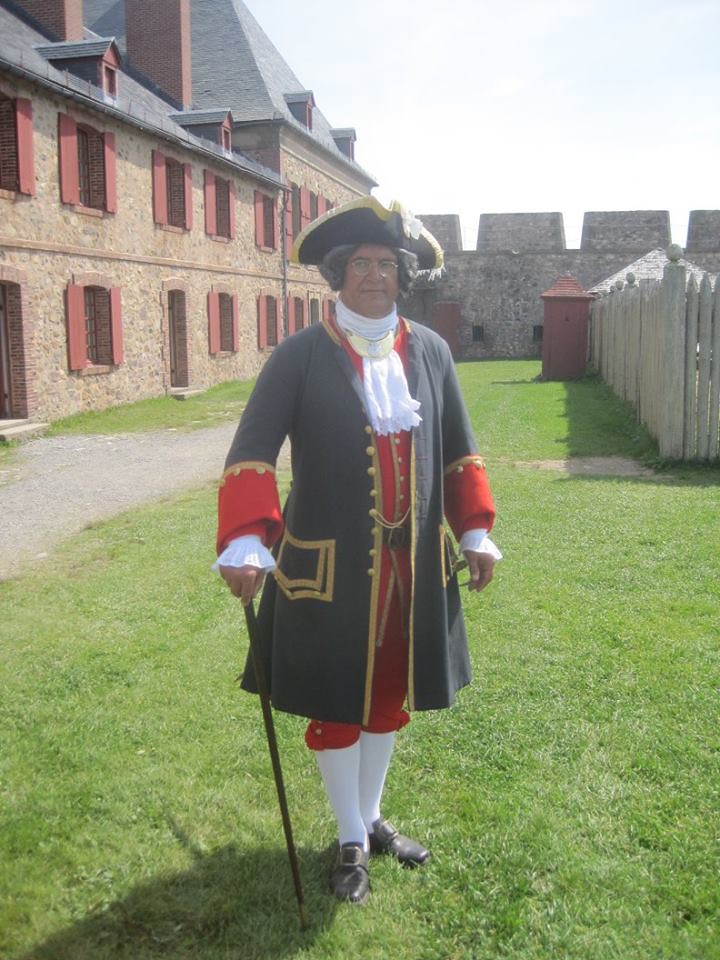 |
| Vauquelin, naval Captain who ran the British blockade. |
Another guy was dressed as one of the militia who raided Canso, from Louisbourg, in 1744. He's carrying a captured Brown Bess (i.e., English) musket, as well as a scalping knife. While they don't really play up issues like scalp bounties or slavery, both the exhibits and the interpreters are frank about the existence and prevalence of such practices. Cub was a little startled to discover that kids were a favourite target for scalpers, as they brought in the same bounty with less risk.
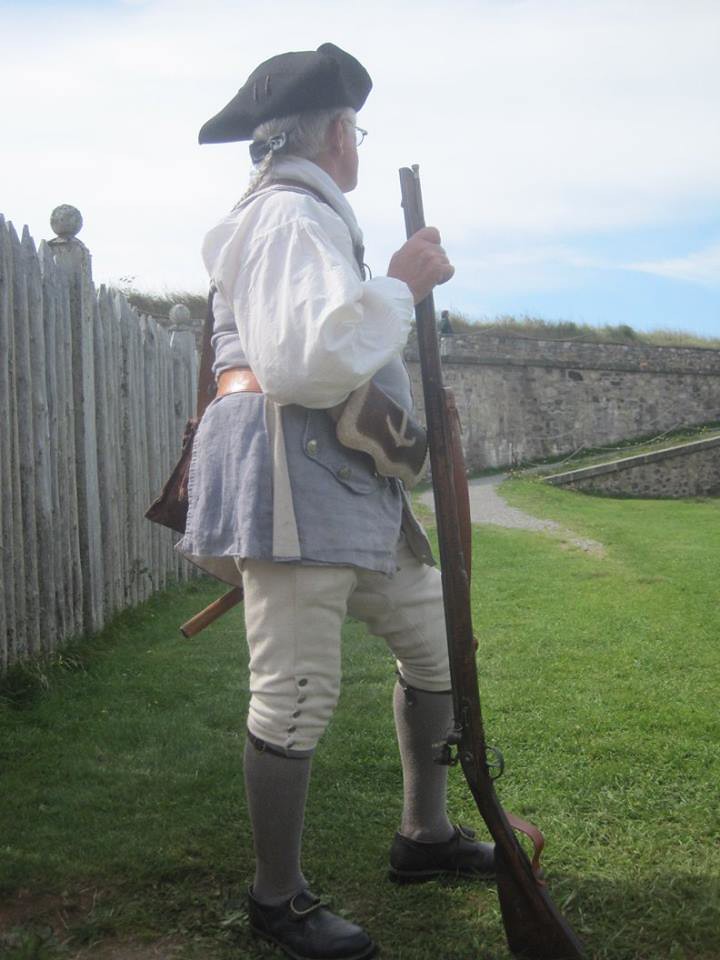 |
| Militia. Note the Brown Bess, captured at Canso. |
There's a visible Compagnie Franche de la Marine presence in town.
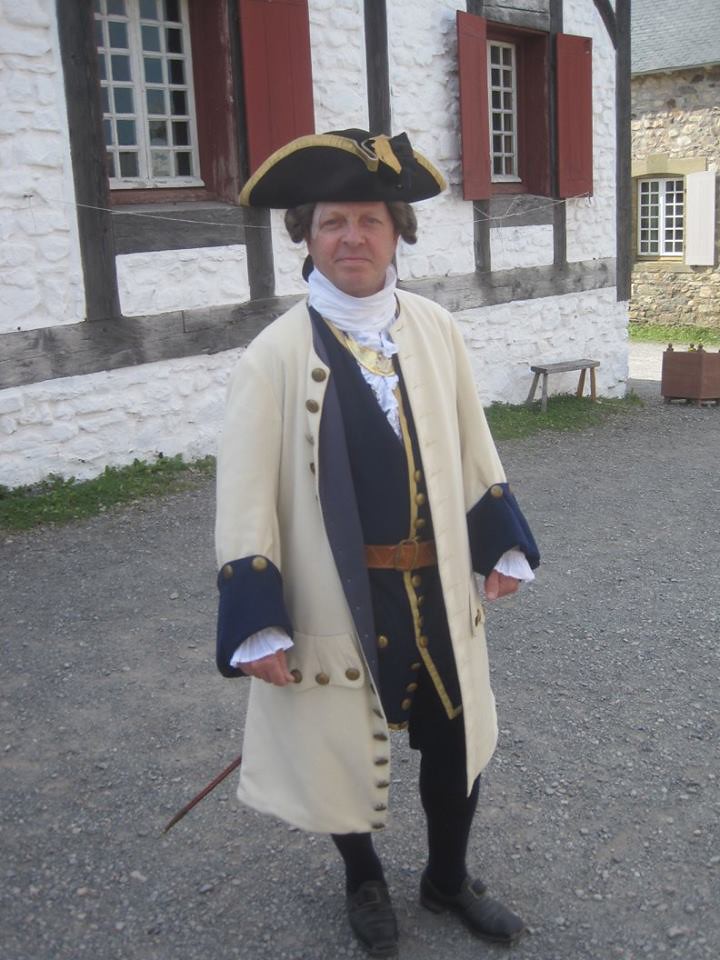 |
| Marine officer. Invited us to a dance. |
Other daily spectacles include the marching of a criminal to the post for public humiliation and summary judgement. The drums and cries attracted quite a crowd, including a pack of kids, most of whom enthusiastically called for the more heinous sentencing options. Nothing like a good mob to bring people together ;)
 |
| Marching a thief to the punishment post. |
I had a fantastic time. Louisbourg is pretty much the best restored example of my favorite period of history, and I've wanted to go for more than a decade. We spent the whole day on site, and while we hit pretty much every building (including the Inn, for a period lunch, I recommend the fish soup), there wasn't one spot in which I couldn't have spent more time; there's also a few other daily events that we missed due to overlap, including one on a soldier's life, and one for kids.
If we're still around next summer, we're definitely going back, and I'd strongly recommend a trip to anyone with an interest in the period. The Fortress, and the process of restoration, are frankly a national treasure, and while Cape Breton is a little out of the way, it's very much worth the trip.
Needless to say, this has whet my appetite for painting up more of my Acadian project, and I've already dug out and begun sorting through the next batch of figures for painting.
FMB


























What a lovely looking trip. I would very much like to visit that someday!
ReplyDeleteChristopher
What a great place, nice pictures FMB!
ReplyDeleteBeautiful pictures and uniforms...hope I'll be there one day!
ReplyDeleteThat looks like a fabulous day out.
ReplyDeleteGreat report and looks really cool. It's one of the places I do want to visit. A little closer to you is Port-Royal in the Annapolis Valley which I had done. Not as spectacular but interesting all the same with the wooden reconstruction etc. and well worth a visit IMO - as I love that type of stuff as well.
ReplyDeleteA beautiful day and many beautiful photos. Excellent stuff!
ReplyDeleteA place I would enjoy visiting .
they're doing a wonderful job on the renovation , looks like you could spend several days there before running out of things to see .
ReplyDelete"Companie Franche de la Marine guard. Cub recognized him as one of the guys I've painted."
now that was a great moment :)
Looks like an excellent trip. Well done Sir.
ReplyDeleteYou and your Frenchies.
ReplyDeleteSeriously though, that looks like a really cool place to visit - much more there than at Fort York, for example.
And anything that encourages you to paint up some Acadians is a good thing, of course.